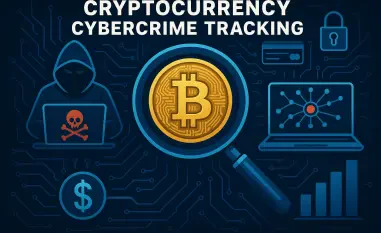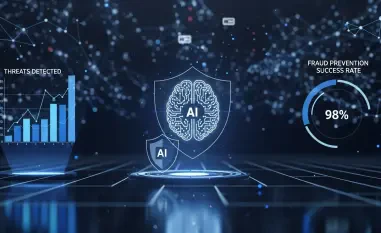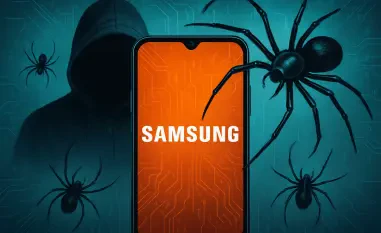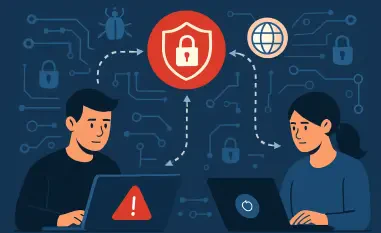Introduction to a Growing Cybercrime Epidemic
In an era where digital transactions underpin global economies, the audacity of cybercrime has reached alarming heights, with a single individual capable of causing millions in damages from behind a screen, as seen in the case of a 20-year-old from Palm Coast, Florida. His actions as part of a notorious hacking group have spotlighted the vulnerabilities in modern cybersecurity. This report delves into the sentencing of this young cybercriminal, exploring not only his personal accountability but also the broader implications for industries grappling with relentless digital threats. The scale of such crimes underscores an urgent need for robust defenses in a landscape where hackers exploit both technology and human error with devastating precision.
The cybercrime wave, driven by groups employing sophisticated tactics, poses a persistent challenge to sectors like retail, insurance, and entertainment. As these entities digitize operations, they become prime targets for attacks that blend technical skill with deception. This analysis aims to unpack the details of a significant legal outcome while assessing the ongoing risks and systemic weaknesses that enable such breaches to proliferate across industries worldwide.
Background on a Notorious Cybercriminal
Noah Michael Urban, a 20-year-old resident of Palm Coast, Florida, emerged as a key figure in the cybercrime underworld through his affiliation with the hacking collective known as Scattered Spider. Operating under online aliases such as ‘Sosa’ and ‘King Bob,’ Urban gained notoriety for his role in orchestrating schemes that targeted unsuspecting victims. His involvement extended beyond a single group, with connections to other entities like Star Fraud, which specialized in specific types of digital fraud.
The timeline of Urban’s criminal activities spans from mid-2022 to early 2023, a period during which he engaged in numerous illicit operations. His primary focus during these months was on SIM swapping and the theft of cryptocurrency, exploiting personal data to drain accounts with alarming efficiency. This window of activity highlights how quickly a determined individual can inflict significant financial harm in the digital realm.
Urban’s association with Scattered Spider placed him within a network responsible for some of the most high-profile cyberattacks in recent memory. The group’s reach and adaptability made it a formidable adversary, capable of striking diverse targets with tailored strategies. Understanding Urban’s background provides critical context for the scale of disruption caused by both him and the wider collective he represented.
Details of the Crimes and Legal Consequences
Scope and Impact of the Cyberattacks
Urban’s criminal endeavors centered on a conspiracy to steal at least $800,000 from victims’ cryptocurrency accounts through a method known as SIM swapping. This technique involves deceiving telecom providers into transferring a victim’s phone number to a SIM card controlled by the attacker, thereby gaining access to sensitive accounts through password resets. Such a tactic exploits both technological systems and human trust, often bypassing traditional security measures.
The broader activities of Scattered Spider, with which Urban was deeply involved, amplified the threat landscape significantly. In 2022, the group launched a phishing campaign that targeted over 130 organizations, demonstrating their capacity for widespread disruption. High-profile victims, including Caesars Entertainment and MGM Resorts, suffered substantial breaches, revealing the vulnerability of even well-resourced entities to such coordinated attacks.
These incidents underscore the cascading effects of cybercrime, where a single breach can compromise vast amounts of data and erode consumer confidence. Urban’s role in these schemes illustrates how individual actors contribute to a larger ecosystem of digital theft. The financial and reputational damages inflicted by these attacks continue to reverberate across affected industries, demanding urgent attention to preventive strategies.
Sentencing and Financial Penalties
In a significant judicial outcome, Urban was sentenced to a 10-year prison term, followed by three years of supervised release, reflecting the severity of his actions. Additionally, he was ordered to pay $13 million in restitution to compensate for the losses incurred by his victims. This ruling sends a clear message about the consequences awaiting those who engage in such illicit activities, regardless of their age or background.
The legal process unfolded with Urban’s arrest in early 2024, culminating in an indictment later that year on charges including wire fraud and identity theft. These charges captured the multifaceted nature of his crimes, which relied on deception and unauthorized access to personal information. The timeline of his prosecution highlights the determination of law enforcement to hold cybercriminals accountable, even as challenges persist in tracking such offenders.
A point of contention arose when Urban claimed his sentence was unjust, citing an unrelated incident where another member of Scattered Spider accessed the presiding judge’s email. By impersonating the judge to request a password change, the hacker obtained a copy of Urban’s sealed indictment, raising questions about the group’s audacity and reach. This breach of judicial security further complicates the narrative, illustrating how cybercrime can extend its influence into unexpected domains.
The Persistent Danger of Hacking Collectives
Scattered Spider represents a formidable threat in the cybercrime landscape, known for its adaptability and sophisticated approaches to exploitation. Unlike traditional criminal organizations, this group operates with a decentralized structure, making it difficult to dismantle through conventional means. Their ability to pivot strategies and target new sectors keeps industries on edge, as evidenced by recent attacks on UK retailers.
Cybersecurity firms and US government agencies have issued stark warnings about the group’s focus on retail and insurance sectors within the United States. These industries, reliant on vast troves of customer data and digital transactions, offer lucrative opportunities for exploitation. The ongoing nature of these threats necessitates constant vigilance, as attackers refine their methods to exploit even minor lapses in security protocols.
A hallmark of Scattered Spider’s operations is the seamless integration of technical expertise with social engineering. By manipulating help desk systems and other human-centric vulnerabilities, they gain unauthorized access with alarming frequency. This blend of tactics underscores the need for comprehensive defenses that address both technological and behavioral aspects of cybersecurity, a challenge that remains unmet in many organizations.
Obstacles in Curtailing Digital Threats
Combating decentralized hacking networks like Scattered Spider presents systemic difficulties, even with individual convictions such as Urban’s serving as deterrents. The fluid nature of these groups, often operating across borders and jurisdictions, complicates efforts to disrupt their activities comprehensively. Law enforcement agencies frequently find themselves playing catch-up to criminals who operate in the shadows of the internet.
One major obstacle lies in the rapid evolution of tactics like phishing and SIM swapping, which are quickly adopted by other malicious actors. As soon as one method is countered, new variations emerge, exploiting gaps in awareness or technology. This constant innovation cycle demands equally agile responses from defenders, a task made harder by resource constraints and varying levels of preparedness across industries.
Potential strategies to mitigate these risks include bolstering cybersecurity measures through advanced tools and fostering cross-sector collaboration. Sharing intelligence about emerging threats and best practices can create a united front against cybercriminals. However, implementing such initiatives requires overcoming barriers like data privacy concerns and competitive interests, which often hinder collective action in the private sector.
Law Enforcement and Regulatory Efforts
The role of law enforcement in tackling cybercrime is evident in Urban’s arrest and subsequent conviction, which demonstrate a commitment to pursuing digital offenders. Agencies have ramped up efforts to track and apprehend individuals involved in such schemes, often collaborating with international partners to address the global scope of these crimes. Such actions serve as a reminder that cyberspace is not a lawless frontier, despite its perceived anonymity.
Regulatory frameworks and compliance standards play a crucial role in fortifying industries against groups like Scattered Spider. Mandates that enforce stringent security protocols can reduce the likelihood of successful attacks, particularly in sectors prone to social engineering. However, ensuring adherence to these standards across diverse organizations remains a complex endeavor, often requiring tailored approaches to different business models.
Enhancing security protocols is especially critical for sectors vulnerable to unauthorized access, where a single breach can have far-reaching consequences. Initiatives to train employees on recognizing deception tactics and to implement multifactor authentication are gaining traction as essential defenses. Regulatory bodies must continue to evolve these requirements in tandem with emerging threats, ensuring that protections keep pace with criminal ingenuity.
Projections for Cybercrime and Sectoral Impact
Looking ahead, the cybercrime landscape appears poised to remain a significant risk, driven by adaptable groups and the development of new exploitation methods. The persistence of these threats suggests that industries must prepare for an ongoing battle, where complacency can lead to catastrophic breaches. Retail and insurance sectors, in particular, face heightened exposure due to their reliance on digital infrastructure and sensitive data.
Advancements in cybersecurity technology offer a potential disruptor, with tools like artificial intelligence and machine learning providing new ways to detect and prevent attacks. Increased government intervention, through funding and policy, could further shift the balance toward stronger defenses. Yet, the effectiveness of these measures will depend on their timely deployment and the willingness of organizations to adopt them proactively.
The implications for targeted industries underscore the urgency of preemptive action to safeguard against evolving dangers. Businesses must prioritize investments in robust systems and employee education to mitigate risks that can undermine trust and financial stability. As cybercrime continues to morph, staying ahead of perpetrators will require a mindset of continuous improvement and adaptation across all levels of operation.
Final Reflections and Path Forward
Reflecting on the developments surrounding Noah Urban’s case, it became clear that his sentencing marked a pivotal moment in holding cybercriminals accountable for their actions. The substantial prison term and restitution order underscored the gravity of his offenses, serving as a deterrent to others contemplating similar paths. Yet, the broader struggle against hacking collectives persisted as a daunting challenge throughout the period of his prosecution.
The audacity of Scattered Spider, exemplified by incidents like the breach of judicial communications, highlighted the depth of systemic vulnerabilities that remained unaddressed. Efforts to combat these threats revealed gaps in both technology and human preparedness, with industries often reacting rather than preventing. This reactive stance allowed cybercriminals to maintain an edge, exploiting weaknesses before defenses could be fortified.
Moving forward, actionable steps emerged as critical to altering this dynamic, with a focus on fostering collaboration between public and private entities to share threat intelligence. Investing in cutting-edge security solutions and prioritizing regular audits of digital systems offered a roadmap to resilience. Ultimately, the fight against cybercrime demanded a unified commitment to innovation and vigilance, ensuring that the lessons from Urban’s case translated into lasting protections for vulnerable sectors.













